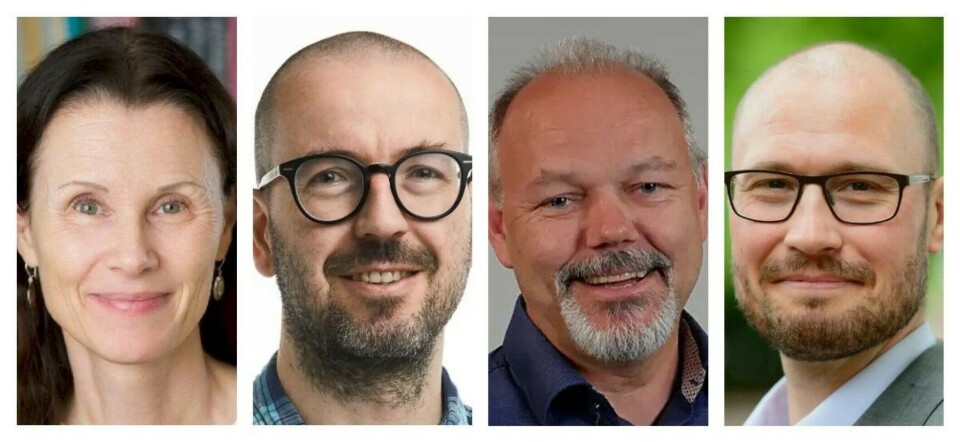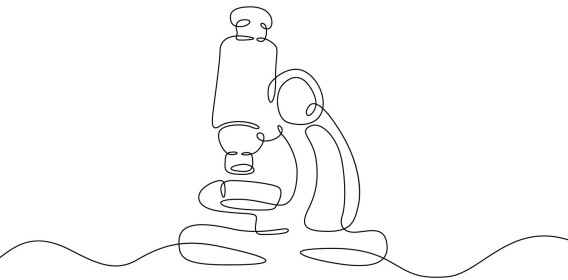
How can Norway’s sickness absence rates be reduced? Here’s what experts suggest
Sickness absence in Norway has increased by 20 per cent since 2019, and the country has higher sickness absence rates than its neighbouring countries. Experts offer solutions.
What can be done about high sickness absence rates in Norway? Would it help to cut the sick pay scheme or provide better help for those with mental health problems?
There is conflicting advice and lots of disagreement. Sciencenorway.no has compiled different proposals: We asked seven experts to share their solutions for reducing sickness absence.
Measure 1: Review the sickness benefit scheme
One of the possibilities is to look at the benefit scheme for sick leave, say some of the experts sciencenorway.no spoke with.
However, most of the changes that can be made to the sickness benefit scheme are very controversial, according to economist Simen Markussen. He is the director of the Ragnar Frisch Centre for Economic Research.
“The least controversial change might be to adjust the employer's financial responsibility,” he says.

Currently, the employer only pays for the first 16 days of sickness absence, after which the state takes over.
The employment committee, which includes labour market representatives and experts, discussed a new financing model in 2021 to reduce long-term absenteeism.
The model suggested reducing the employer's period to 12 days, while requiring the employer would cover 10 per cent of sick pay after the employee has been on sick leave for three months.
This would give employers more incentive to get employees on long-term sick leave back to work.
The Norwegian Confederation of Trade Unions has opened the door
“At the time, the Norwegian Confederation of Trade Unions (LO) blocked this proposal. Now they have turned around and opened the door slightly,” says Markussen.
He believes there is now some chance this might go forward.
“I also think it's a measure that would have an impact,” he says.
Ulf Andersen, head of statistics at the Norwegian Labour and Welfare Administration (NAV), also believes it would be wise to give businesses an incentive to get people back to work.

In Norway, it is the long-term absences that matter most; the months-long absences, not just a few days.
“We know that the longer you are on sick leave, the higher the risk of dropping out of the workforce," he says.
Measure 2: Lower pay during sickness absence
Another measure that Markussen believes would be effective is to do something about Norway’s generous benefit schemes during sickness absence.
Today, Norwegians are paid their full salary when they are on sick leave. According to Markussen, few, if any, other countries offer this. In contrast, many employees still get full pay during illness because it is part of their collective agreements.
Some countries, like Sweden, have introduced qualifying days. There, employees must cover the first day's lost income themselves. Then, from day 2 to 14, they receive sick leave benefits from their employer corresponding to 80 per cent of their salary – regardless of how much they earn.
Many argue that Norway should introduce a similar measure to reduce sickness absence rates.
Andersen does not agree.
“Researchers who have looked at the effect of qualifying days find that it's almost zero. We reduce short-term absences, but people end up staying home longer. Once you've taken an unpaid sick day, you stay home until you're absolutely sure you're well because you don't want to trigger another unpaid day,” he says.
The net effect will therefore be approximately zero.
Too controversial
Markussen suggests reducing pay to 90 per cent during sickness absence, though he doubts this will happen now, as it is too controversial.
However, he believes research indicates it could help reduce sickness absence.
“There are a number of studies from other countries that have made these changes. While the results vary, many show a positive effect. I would guess that if you cut sick pay from 100 to 90 per cent, sick leave would decrease by somewhere between 6 and 7 per cent,” he says.
Will affect people disproportionately
Solveig Osborg Ose is a senior researcher at SINTEF and studies sickness absence.
She believes that cutting sickness benefits would disproportionately affect some employees.
“Those who use the sickness benefits scheme the most will face the biggest consequences. These are employees in the nursing and care services and kindergartens. They have fairly low salaries and would struggle financially if they lost income due to illness,” she says.
There is a risk that employees will go to work while sick because they cannot afford to lose income.
“This could result in them having to take longer sick leave than if they had stayed at home and recovered,” she says.
“I believe we can reduce sickness absence, especially in the municipal sector where it's high, by finding solutions that provide employees with better working conditions and a lower workload,” she says.
Measure 3: Work environment – “low-hanging fruit"
Cathrine Haugene Ljoså is department director at STAMI, the National Institute of Occupational Health in Norway.
She also believes there is great potential for reducing sickness absence by tackling the work environment.
“You need to investigate what challenges exist in the work environment of each sector and address them systematically. It’s important for this to come from the leadership,” she says.
Ljoså believes it is also important to have a clear understanding of what makes a healthy work environment, which is closely tied to the nature of the job.
For example, hairdressers score high on motivation and job satisfaction. However, there are many challenges in their work environment.
“They stand all day, work with their arms above shoulder height, are exposed to chemicals, and do a lot of wet work, which exposes them to skin issues,” she says.
One in three people who have been on sick leave report that their leave was work-related, according to Statistics Norway's living conditions survey.
“People get sick for various reasons, and it's not always easy to address. But work-related sick leave is essentially a low-hanging fruit,” she says.
Doctors are not effective gatekeepers
GPs grant most sick leave. But they are not effective gatekeepers. It pays for them to have short consultations and perform many procedures, researcher Arnstein Mykletun recently wrote in an op-ed in the national newspaper Aftenposten.
It’s not worth a doctor’s time to follow up patients on sick leave.
Marte Kvittum Tangen, head of the Norwegian Association for General Practice, believes that the issue of sickness absence is not solely the responsibility of GPs.
“At the same time, we're keen to increase our competence in managing sick leave and strengthening the gatekeeper role that GPs are supposed to have. Patients shouldn't come to their GP with the expectation of receiving something as a given," she says.
Tangen says that the Norwegian Association for General Practice would welcome more support on how to strengthen their gatekeeper role.
She mentions that they are eager to continue working on the ‘Sustainability at the Doctor's Office’ project, to develop courses led by the Centre for Quality in General Practice, and to collaborate more with advisory doctors at NAV.
People actually do get sick
Reducing sick leave will require evaluating a number of measures, according to Tangen.
“We must look at workplaces, management, whether we are educating people in accordance with the needs of society, and analyse the causes of sickness absence in more detail,” she says.
“We will always have some sick leave. I sometimes miss that perspective. People talk about sick leave as if it's entirely unnecessary. But I know that people get seriously ill. Sometimes, you're too ill to go to work,” she says.
Measure 4: Less sick leave for mental health problems
Over the last five years, sick leave due to mental health problems has increased by 44 per cent.
Håkon Kongsrud Skard, president of the Norwegian Psychological Association, believes it is possible for politicians to reduce this type of sickness absence.
“Of course, some people need sick leave, and there are certainly cases where individuals can’t work because of their mental health, whether temporarily or permanently. But for far too long, we’ve assumed that if you’re sick and struggling, the best solution is to rest and avoid work stress,” he says.
However, for mental health problems, activity, mastery, and social engagement are essential, he points out.
“Maintaining and utilising the healthy, functioning part of yourself is incredibly important in the recovery process. What we need is treatment and work participation to be deployed in parallel,” he says.

Skard believes that we need accessible, interdisciplinary mental health services in municipalities that can collaborate with NAV and GPs.
“This infrastructure has not been developed,” he says.
Measure 5: Better help for those with mental health problems
For 12 years, since the Coordination Reform in 2012, there has been talk about increasing the workforce in primary healthcare at twice the rate of specialist healthcare.
Skard notes that the exact opposite has happened.
“It’s not that mental health services don’t exist, but the variation between municipalities is too large. The mix of expertise is inconsistent. There’s great potential for improvement and greater efficiency, both for individuals and society, if health services and NAV collaborate more effectively,” he says.
He adds that several projects have examined these initiatives and proven their effectiveness.
“We already know enough to scale them up significantly. This would provide faster, more effective help to more people,” he says.
Measure 6: Sick leave days to care for elderly parents
Researcher Heidi Gautun at OsloMet has found that people take sick leave to care for elderly parents.
The researchers found a clear increase in absenteeism among those caring for their elderly parents.

A significant portion of these absences happen through the sickness benefits scheme: Use of sick leave days to provide care accounted for nearly 40 per cent of the absenteeism covered by sickness benefits, even though sick pay is only meant to be used when it is the employee who is sick.
Researchers say the findings suggest a mismatch between current sick leave policies and the needs people actually have.
Gautun believes it is urgent to establish a system for the many who have to balance work with caring for elderly parents.
“We propose that short-term leave similar to the arrangement for parents with children under the age of 12,” she says.
Forced into early retirement?
It’s not realistic f to expect relatives to take on more caregiving responsibilities than they do today, according to Gautun.
“We've already reached a limit. Half of those we asked say it's difficult to combine caregiving with work. What will happen? These people are also expected to work more, according to the authorities. It could be that people retire earlier because it becomes too heart-wrenching to balance work and caregiving,” she says.
“It's very unwise to try to save money in the healthcare sector. We should have been much better prepared for what's coming. The large increase in the elderly population is still ahead of us,” Gautun reminds us.
Recently, the Norwegian Association of Local and Regional Authorities (KS) also noted that relatives must take on more caregiving duties. Municipalities cannot handle this responsibility alone, according to KS.
———
Translated by Nancy Bazilchuk
Read the Norwegian version of this article on forskning.no
Related content:

Subscribe to our newsletter
The latest news from Science Norway, sent twice a week and completely free.






































